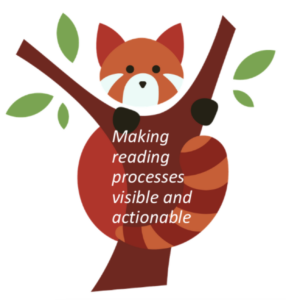Redforest Reading Tool

Redforest is a system that has grown out of research exploring the differences and similarities between digital and paper reading. It provides data (including eye-gaze data from various eye-gaze tools) on in-the-moment reading behaviors, shedding light on the reading process as it relates to the reading product. The Redforest system allows teachers to get data on HOW students are reading because it provides where students looked, what they did (highlight, etc), how they scrolled, and what tools they used. The system is setup to be flexible such that various content can be uploaded and then students and teachers can get data on the reading behaviors used during a first reading as well as what they are doing during comprehension tasks such as answering questions or summarizing. The tool continues to be developed and we are moving towards training an AI model to identify larger behaviors like re-reading, skimming, deep processing, etc. AI and various means are also used to communicate the quality of behaviors (i.e., did the student re-read the full text to answer the question or look back the specific location) so that such knowledge can inform instruction. This tool can serve assessment, instruction, and research needs. Our team uses it primarily to explore modern reading and hence digital and paper reading similarities and differences.
How to Get Involved:
The Redforest Team loves to collaborate to improve our systems including our eye-gaze tools, our coding of our AI model, our visuals, and all other areas.
Redforest PI
Redforest Personnel
Core Publications
Goodwin, A. P., Cho, S. J., Reynolds, D., & Brady, K. (2020). Digital vs Paper Reading Processes and Links to Comprehension for Middle School Students. American Educational Research Journal, 57(4), 1837-1867.
Shimizu, A. Y., Havazelet, M., & Goodwin, A. P. (2024). More than one way: Fifth-graders’ varied digital reading behaviors and comprehension outcomes. AERA Open, 10, 1-25.
Cho, S.-J., Goodwin, A. P., Naveiras, M., & Salas, J. (in press). Differential and functional response time item analysis: An application to understanding paper versus digital reading processes. Journal of Educational Measurement.
Funding Sources









